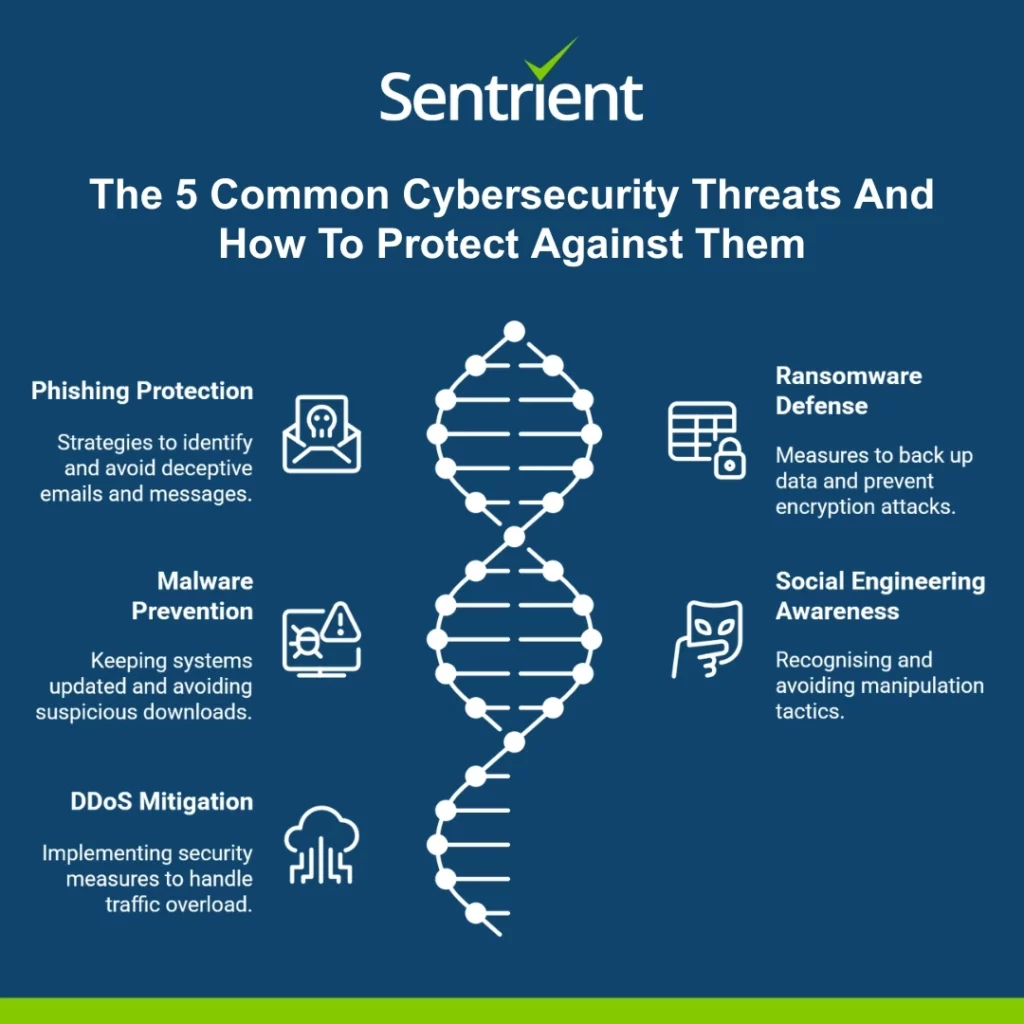Cybersecurity is an ever-growing concern for individuals and businesses alike. With the increasing reliance on technology and the internet, the threat of cyber-attacks is becoming more prevalent. In this blog post, we will look at the five common cybersecurity threats and how to protect against them.

1. Phishing
Phishing is one of the most common cybersecurity threats. Attackers will send emails or messages that appear to be from a legitimate source, such as a bank or a government agency, to trick the recipient into providing sensitive information. This information can include login credentials, credit card numbers, and other personal information. To protect against phishing, it is essential to be sceptical of unsolicited emails or messages. Never click on links or provide information without verifying the authenticity of the sender. Additionally, many companies and organisations offer training programs to help employees recognise and avoid phishing attempts.
2. Ransomware
Ransomware is a type of malware that encrypts a victim’s files and demands payment in exchange for the decryption key. This can be devastating for businesses, as it can prevent them from accessing important files and data. To protect against ransomware, it is essential to back up your important files regularly. This will ensure that you have a copy of your data that can be restored in the event of an attack. Additionally, keeping your operating system and antivirus software up to date can help prevent malware from being installed on your computer.
3. Malware
Malware is any software designed to harm a computer or network. This can include viruses, worms, and Trojans. Malware can be spread through email attachments, downloads, and even through visiting compromised websites. To protect against malware, it is essential to keep your operating system and antivirus software up to date. Additionally, be cautious of suspicious emails or downloads, and never install software or open attachments from unknown sources.
4. Social engineering
Social engineering is the use of psychological tactics to manipulate people into revealing sensitive information. This can include phishing, pretexting, and baiting. Social engineering attacks can be challenging to detect and prevent, but there are steps you can take to protect yourself. Again, be sceptical of unsolicited emails or messages and never reveal personal information without verifying the authenticity of the sender. Additionally, many companies and organisations offer training programs to help employees recognise and avoid social engineering attempts.
5. Distributed Denial of Service (DDoS) attack
DDoS attacks involve overwhelming a website or network with traffic from multiple sources to make it unavailable to users. This can be devastating for businesses, as it can prevent customers from accessing their websites or services. To protect against DDoS attacks, it is essential to implement security measures such as firewalls and intrusion detection systems. Additionally, working with a managed service provider that can monitor your network and respond to attacks in real time can help prevent and mitigate DDoS attacks.
In conclusion, it is crucial to be aware of the common cybersecurity threats and take the necessary steps to protect yourself and your organisation. By being sceptical of unsolicited emails or messages, keeping your operating system and antivirus software up to date, being cautious of suspicious downloads, having a proper backup in place and considering working with a managed service provider, you can significantly reduce your risk of falling victim to a cyber-attack. It is also essential to stay informed and up to date on the latest threats and trends in cybersecurity so that you can adapt your security measures accordingly. Remember, prevention is always better than cure, so take the time to secure your systems and data.





